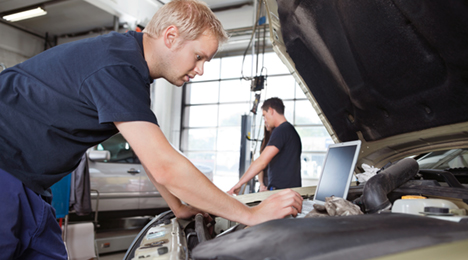2 strategies to help service departments handle workload

It’s a tricky balancing act dealerships play — keeping service bays running efficiently with customers’ units that generate both profit and loyalty while also reconditioning trades and other pieces of used inventory to get them prepared for the retail blacktop.
To help service department managers tackle this challenge, research and strategy firm Vennli shared what it found through its latest consumer survey while Rapid Recon discussed the impact of reducing the daily holding costs had at Ricart Automotive.
3 paths to improve the service drive
First Vennli set the stage by recapping how the firm questioned 516 vehicle owners about their choice to go to the dealership for ongoing service versus independent service centers that work on all models or specialty service centers that are focused on a certain type of service like tires or brakes. The survey generated five trends, including:
• Only 36 percent of vehicle owners go to a dealership for regular maintenance and just 22 percent go for oil changes. However, the large majority of individuals (91 percent) who get their oil changed at a dealership also get their service done there.
• The importance of choice factors was similar for people who choose to go to a dealership and those who go to an independent service center. The most important drivers of choice were quality of service, explanation of service, trust in the recommendations, expertise with make and model, speed of service, low price, and comprehensive, one-stop shop for all service.
• It was less important for vehicle owners to be able to schedule online, personally know the mechanic, have the vehicle cleaned before it was returned, or experience a great waiting area.
• Owners perceived independent service centers to be cheaper. However, they valued the specific expertise of the dealership service centers as well as the certification of mechanics, comprehensive vehicle inspection, and use of parts by a specific manufacturer.
• Individuals who go to the dealership for service believe it has higher quality of service and is equally convenient for them compared to other options. Those that go to independent service centers similarly believe it has higher quality of service but find it to be more convenient.
In light of those five findings, Vennli recommended a trio of modifications dealers could make to improve their performance in this area.
1. Redirect focus from less important items (waiting room, cleaning service) to the core drivers of customer choice.
“Customers want quick service or the option to drop off their car – they don’t want to wait while it’s serviced,” Vennli analysts said. “In fact, people who leave their car and return for service spend $3 on service for every $1 spent by a person who waits while their car is being serviced.
“Customers who wait want to get out as soon as possible and will turn down additional services,” they continued. “A possible solution is to offer a concierge service where the car is picked up and dropped off.”
2. Focus marketing communication on the specialized and comprehensive service the dealership provides.
3. Consider marketing campaign strategies to bring customers in for oil changes, knowing that most who come in for oil changes will return for regular service.
“Highlight comparable pricing for oil changes to neutralize the perceived advantage of competitors,” Vennli said.
Faster to the front line
It’s like the child waiting in line to see Santa at the mall; that time it takes to get that vehicle the dealership took as a trade or the unit that just arrived from the auction ready to be retailed.
NCM Associates notes from its 20 Group studies that daily holding cost is an average $32 per vehicle.
“Where used-car and service and parts managers aren’t aware of how holding costs add up as the recon clock ticks, they’re erasing dollars from gross on every vehicle,” Rapid Recon president Dennis McGinn said.
Dealers who speed the flow of vehicles through reconditioning to get them frontline-ready faster reduce holding cost erosion, said Jared Ricart, service operation manager at Ricart Automotive, who has reduced recon time there from 12 days to four.
“We thought we had good insight into how long it was taking us to get vehicles frontline ready, but when we turned on Rapid Recon it showed us we were at 12 days,” Ricart said. “That long process was killing gross.”
Rapid Recon time-to-market reconditioning software applies the science of workflow accountability to vehicle reconditioning.
“The issue is holding costs,” McGinn said. “Holding cost is each vehicle’s percentage of dealership overhead, which accumulates daily, from acquisition to retail. Faster time to market reduces holding costs’ margin erosion.”
Understanding how holding costs erode gross, a parts manager, for example, can better decide whether to buy a more expensive part to do the repair now versus waiting for a less expensive part that takes a day or two to arrive.
“Looking at the first seven months on Rapid Recon, we’ve retailed 5,000 used cars. By cutting down the days in service by eight days, at $32 a day per vehicle, you can do the math on the savings we’ve collected,” Ricart said.
Ricart noted the Rapid Recon process can help technicians better appreciate recon economics.
“Techs who understand recon is a production-based service work to move vehicles through inspections and repairs faster,” he said. “At Ricart, recon technicians work a three-day week, with the compressed time to earn their hours incenting them to work faster and push more vehicles through their phase of the reconditioning process.
“As a communications tool, Rapid Recon has helped everyone involved eliminate wait times and work faster toward our common time-to-market goal — and not point fingers,” Ricart went on to say.
Dealers can calculate their holding costs using Rapid Recon’s Holding Cost Calculator.

 View The Latest Edition
View The Latest Edition

